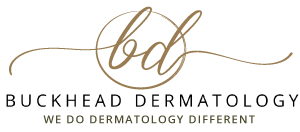How Does Alcohol Consumption Affect the Skin?

As many people age, they realize that things in their environment and diet can significantly affect how their skin appears. From dark circles to skin rashes, there is evidence that alcohol consumption can affect skin health and appearance. The reason this revelation is happening more in older adults is because when a person is younger, their skin has higher recovery rates, and signs of alcohol can be more easily treated and covered. However, as skin ages, its ability to “bounce back” and look refreshed after a long night of drinking greatly diminishes. Understanding how alcohol affects skin allows individuals to make personal choices about the importance and amount of alcohol they choose to have in their lives.
Alcohol Causes Dehydration
Alcohol dehydrates the body, which leads to puffiness, often under the eyes. If consuming alcohol, it is always recommended to have water alongside to keep giving the skin and body the water it needs. Without enough water, alcohol can cause more damage to the stomach and lead to bloating and swollen abdomens. There are bloating remedies at local drug stores, but the best approach is to drink water when consuming alcohol, and if you must, always consume it in moderation.
Dark Under Eye Circles
It may surprise people that the belief that alcohol aids in better sleep is a myth. Alcohol may help a person fall asleep more quickly when their head hits the pillow, but alcohol breaking down the sugar through the night will disrupt sleep patterns and often cause restless leg syndrome and other restless symptoms. It is rare you will hear someone proclaim they had several cocktails and woke up feeling rested and hydrated! As people age, less and less alcohol is being consumed because people are choosing to feel and look better rather than overdo it when consuming alcoholic beverages.
Rest can be an anecdote for many signs of a night of overindulging with alcohol. Getting enough sleep will help counter some of the effects.
Dark under-eye circles can be improved with cold compresses, and some eye masks may lighten the area. Darkening skin is also a sign of aging and greatly affects those with darker skin tones. If you notice this and do not drink or want to get professional advice about how to treat it, contact a local dermatologist who specializes in darker skin tones.
Rosy Cheeks Don’t Equal Happy
Some people have a cheery disposition, and when they are jolly, their cheeks and face become red. Rosacea is a skin condition affects well over 16 million people in America, according to the National Rosacea Society. The enzyme ALDH2 breaks down alcohol and can turn cheeks rosy when consuming alcohol. The toxins from the alcohol aren’t breaking down properly, and the toxins remain in the skin cells and can lead to warmth and flushed cheeks. Although this is often a hereditary trait, it is well-known this condition is intensified by drinking alcohol.
Those who suffer from rosacea know their skin flushes and gets hot when drinking alcohol. Many react more strongly to citrus-based mixers or alcohol with high tannins, like red wine. Rosacea can come on quickly, affecting the nose, chin, forehead, and cheeks. The red coloring can be so dark if not countered immediately, it can appear purple.
Hives and Rashes Caused by Alcohol
Some people experience rashes and hives when consuming alcohol. In some cases, it may be the first drink; in others, it may be an allergy to something in the mixer or a specific type of alcohol. When the skin begins to itch, and bumps appear, it is time to put down the cup and drink some water. The red, itchy bumps can be unattractive and may be a sign of a person’s inability to process alcohol. Many people are allergic to alcohol, and older adults begin to see signs that were not there in their younger years. Hives may last minutes, hours, or days. Cold compresses can help relieve some of the discomfort from the bumps, and some over-the-counter topical medications may also provide some relief.
Excessive Alcohol Can Cause Bacterial Skin Infections
People who drink heavily may have a skin disease called cellulitis. This bacterial skin infection often affects the lower legs. The skin becomes red and swollen, painful, and warm. Bacteria in your body may get there through a wound or cut and require antibiotics. Licensed dermatologists are skilled and equipped to provide prescriptions to treat any skin condition, and it is often easier than scheduling and visiting with your general doctor.
Alcohol is difficult for the body to break down, which is why so many outward signs appear on the skin. Our skin indicates internal deficits and issues, which is why psoriasis, dandruff, and sun sensitivity have also been connected with alcohol consumption. If you have any skin concerns, contact Dr. Sherrie Straughn at Buckhead Dermatology today for an appointment.
